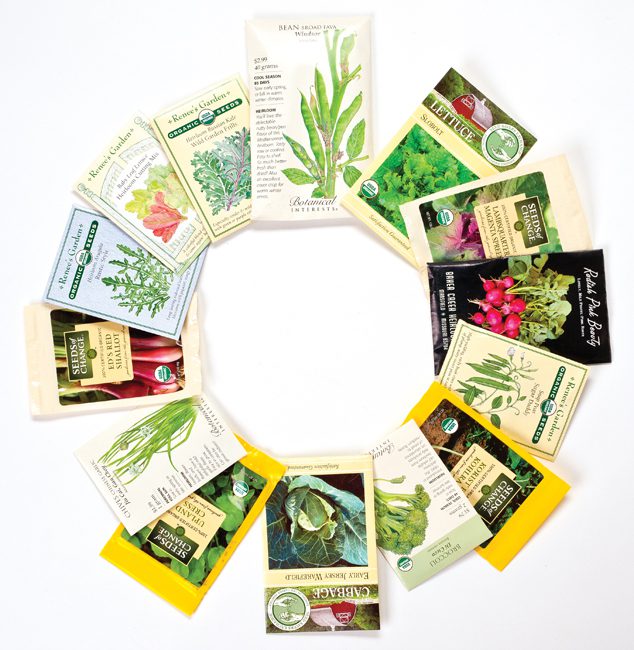Why wait for summer when many cold-tolerant veggies are ready for planting before spring’s last frost? Now is the time to dig in.
Patience may be a virtue, but waiting for summer’s arrival to start your vegetable garden is unnecessary, says Tanya Chatterton, owner of Traces in SLC. “There are many vegetable seeds that can be planted directly into the garden before the season’s last frost.” The trick is to choose the right varieties, plan your plantings and get the seeds into the ground.
Choose cold-tolerant -vegetables. Chatterton’s faves include peas, beans, beets, kale, broccoli, radishes, assorted lettuces, onions, cabbage, cauliflower, spinach, Swiss chard and fava beans.
Guarantee freshness by confirming the seed packet is dated for the current year, advises Chatterton. “You can always try older seeds,” she says, adding that the smaller the old seeds, the less likely they will germinate. If you have extra seeds, store them in an airtight container in a cool, dry spot.
Prepare your plantings. Refer to packet instructions for the proper planting time and spacing. If possible, run rows north and south, so plants get an equal amount of sunlight. Don’t overshadow small plants by placing tall or large plants next to them.
Dig in. Mix organic compost, bone meal and organic fertilizer into the moistened soil before planting the seeds. “Amending your soil makes a world of difference,” says Chatterton. After planting the seeds, don’t stomp the ground. Seeds and roots need room to breathe, so compacting soil is a no-no.
Interplant. Plant later-maturing varieties like peppers between the rows of early spring veggies such as peas, radishes and spinach. When summer’s warmth arrives, the early crops can be harvested and removed. Chatterton advises cutting back rather than removing beans and peas as the dying plants provide added nitrogen to summer crops.
Enjoy. “After a long Utah winter, it is so fabulous to see those little sprouts coming up,” says Chatterton. “They speak to the beginning of spring.”

Tanya Chatterton
DID YOU KNOW?
Salt Lake City’s average last spring freeze occurs on April 26th.
Source: Utah State University, extension.usu.edu
























